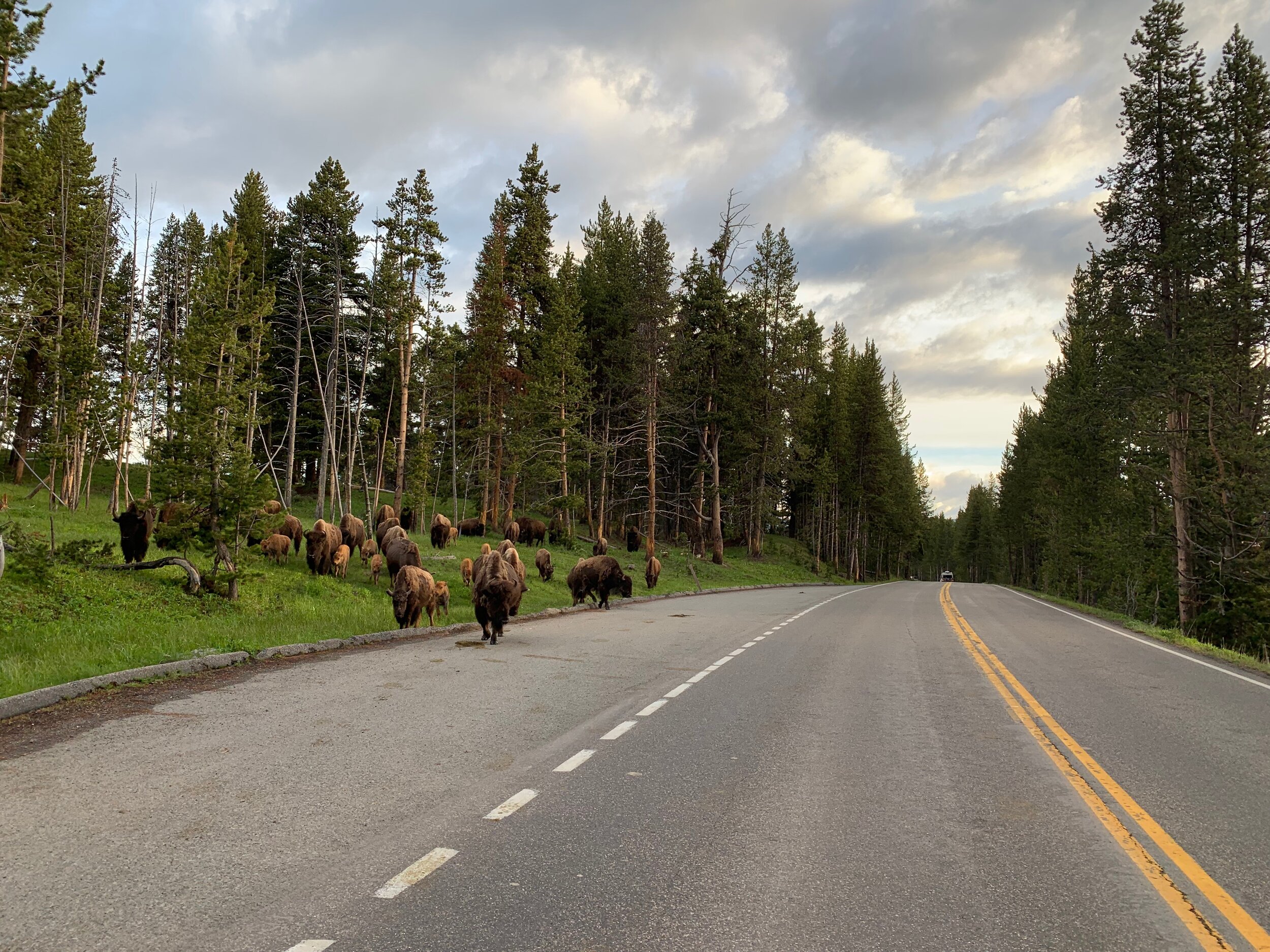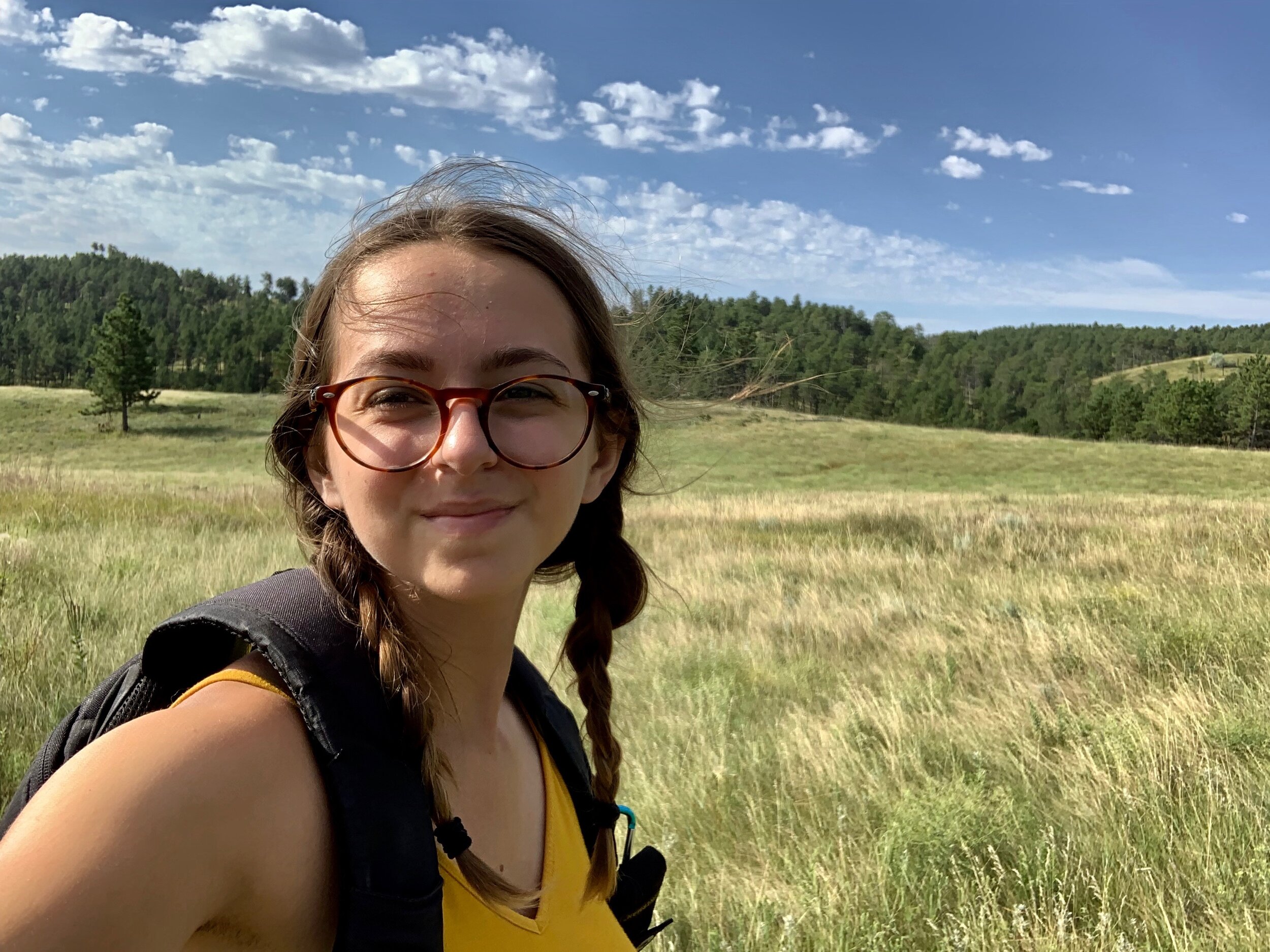One of the most frequent questions I get about National Parks is “where can I see bears?” Wildlife is one of my favorite parts of travel, and in the US, where I’ve done the majority of my travels in the past couple years, there is so much wildlife to see, nearly everywhere you turn. From bison to bears, from bald eagles to seagulls, every landscape has its iconic animal residents, and I’ve encountered quite a few unique furry, feathered, and scaly friends over the years. These are my top three wildlife encounters, and where you can see some of the best!
Note: Please do not approach wildlife. Always leave 25 yards of distance between you and a wild animal, unless the animal approaches you. Even then, use caution.
Disclaimer: this post may include affiliate links
While not on this list, this one almost made the cut: a deer encounter on a trail in Voyageurs National Park
The Armadillos in Congaree
This is one of my favorite animal encounters I’ve ever had because A) armadillos won’t kill you (unless you lick them—they carry leprosy!) and B) I was with some little cousins of mine and they were completing their first Junior Ranger Program.
In Congaree National Park, South Carolina, there is tons of wildlife to be seen, from snakes, to spiders, to one lone and invasive crocodile. Even if you don’t want to do an extensive hike, you’ll see plenty of unique animals just outside the visitor center on the boardwalk trail. This trip was special because I was looking at everything on the boardwalk from a child’s perspective as I helped my cousins (about 9 and 4 years old) look for animals and plants to check off their Junior Ranger checklist. Toward the end of the boardwalk, we saw quite a few people gathered by the side of the trail, and to our surprise, we noticed 3 armadillos just waddling about! They had gotten really close to the boardwalk, so we were able to safely observe them without disturbing their territory (at Congaree, staying on the boardwalk is key!).
Learn more about Congaree and the other East Coast National Parks HERE!
Want to help animals? Shop ethical apparel and help give back to animal sanctuaries at Wholesome Culture and receive a special Halle’s Wandering Soul discount!
While I wasn’t able to get a picture of the Armadillos, here’s a great reason to visit Congaree. To see a video of them, though, head to my Congaree highlight on my Instagram
The Bison in Yellowstone
Yellowstone is ideal for wildlife viewing. Almost nobody visits the park without seeing a bison (or getting caught in a traffic jam—which I’ll explain in a minute). Yellowstone is home to wolves, elk, grizzly bears, bison, and so much more. It truly is the pinnacle of the old American West. If you’re looking to see some incredible wildlife, head out to the park’s Lamar Valley (and if you don’t want to make the trek, don’t worry, you’ll see plenty of animals during your trip).
I only got to spend one night in the park, and stayed at Canyon Campground (which will forever remain one of my favorite campgrounds in the US). On my second day in the area, when I was going to head to Grand Teton National Park, I got up around 6 am, hoping to be on the road before the day’s tourists showed up. I stopped by Artists Point and Grand Canyon of the Yellowstone, and was greeted by one lone bison on the side of the road. This was a cool experience in itself, but I was surprised to turn the corner as I exited the canyon and find a herd of about 20 bison grazing near the road. I stopped to take a picture (from inside my car), and they proceeded to surround me in a classic Yellowstone traffic jam. Talk about morning rush hour! After about five minutes, they dispersed, and the entire time, I was the only one on the road.
Planning a camping trip? Shop environmentally friendly camping gear at Madera Outdoor and receive 20% off
The bison herd in Yellowstone
The Bear in Yosemite
The other stories in this post are just cool, stunning interactions I had with animals, but this one is the reason I always try to tell tourists, “You don’t want to see a bear.” Yosemite is teeming with wildlife. It’s an incredible park full of towering cliffs and animals around every corner, but it’s important to remember that National Parks are not zoos or amusement parks—when we visit National Parks, we are in another creature’s home.
Yosemite is home to black bears. Black bears are slightly less dangerous than brown bears and grizzly bears, which you’ll find in the Rockies (I have seen two grizzlies though, but they were far away). Black bears are small, like the size of a large dog, but since I was visiting in November, they were on the hunt for food, as they were going to be hibernating soon. Because of this, a ranger came around to each site in Upper Pines campground, where I was staying, to tell us what to do if we did encounter a bear in the middle of the night. You’re supposed to say, “bear bear bear Bear Bear BEAR BEAR,” and keep getting louder to scare them off. Of course, you forget all of that when you’re actually faced with a bear.
It was about 10 degrees that night, and I lay in my dad’s old sleeping bag. I was new to tent camping still, and after this trip, I invested in my own 0 degree bag. After the ranger left, we had all gone through our tents and cars (Yosemite bears can break into cars), and since I had nothing in my tent that would smell like food, I felt fairly safe sleeping in active bear country with only a piece of fabric separating me from the outside world.
When camping in bear country, make sure that everything that smells like food is put away in your bear box, bear canister, or bear bag. You can also string your food up in a tree if backpacking. Some parks are less of a worry than others, and you can keep food in your car, but check with a ranger or camp host first.
Around 4 am, I woke up to snarling. Something huge was sniffing at our bear box, which I was camped maybe 10 feet from. I lay still, and quiet—the opposite of what you’re supposed to do, and I swear I remember hearing this bear walk right by me. Holding my breath, I just hoped she would go away, and after a few more seconds of sniffing at the bear box, she ran off into the woods.
It was dark, so I couldn’t snap a picture of the bear, but here’s a reason to visit Yosemite
Wildlife is simply one of the best parts about traveling in the national parks. Every state has such unique animals, and getting to know the nature of each spot is what makes everywhere so special. Check out some of my favorite spots for viewing wildlife below, and start planning your next road trip!
For bison: Badlands National Park, Theodore Roosevelt National Park, Yellowstone National Park, Grand Teton National Park
For bears: Shenandoah National Park, Yosemite National Park, Sequoia National Park, Glacier National Park
For deer: Glacier National Park, Shenandoah National Park, Voyageurs National Park
For lizards and snakes: Joshua Tree National Park, Grand Canyon National Park, Bryce Canyon National Park
For interesting insects: Joshua Tree National Park, Congaree National Park, Hot Springs National Park
For big horned sheep: Glacier National Park
For pronghorns: Badlands National Park, Bryce Canyon National Park
For mountain goats: Glacier National Park
For elk: Yellowstone National Park, Grand Canyon National Park, Redwoods National and State Park
For sea life: Olympic National Park, Redwoods National and State Park
If you’re interested in planning a giant trip around the country that includes most of the parks listed here, check out my ebook, Around the States in 90 Days in the SHOP!

















